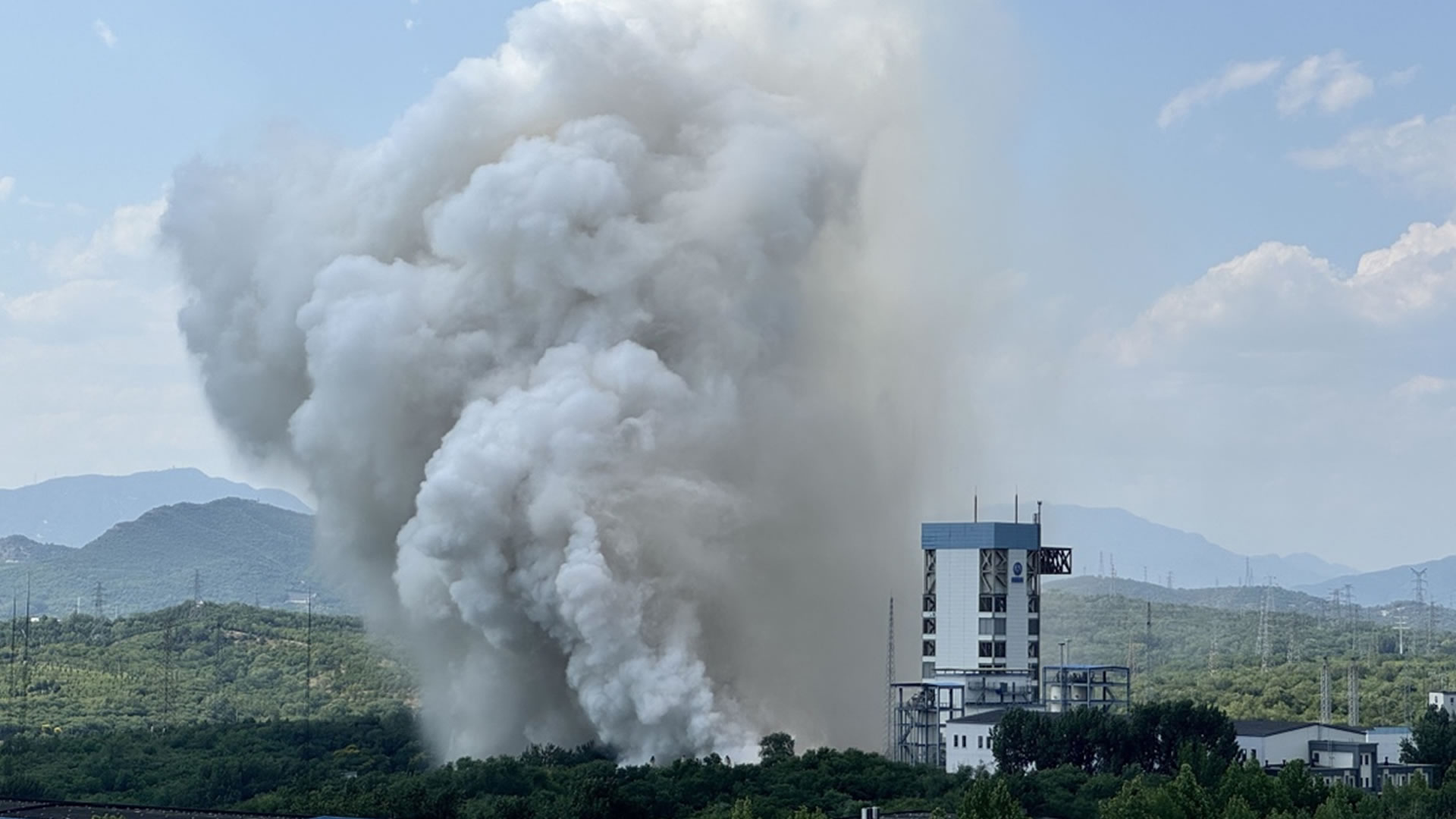China has officially tested the first stage of its Long March-10 space launch vehicle. The China Academy of Launch Vehicle Technology (CALVT) announced the test on Friday (June 14).
The Long March-10 carrier rocket is a three-and-a-half-stage rocket designed to deliver Chinese spacecraft to the moon. China’s manned lunar mission will launch new-generation manned spacecraft and lunar landers.
The Long March-10 has an approximate length of 303.5 feet (92.5 meters), a lift-off weight of about 2,189 tonnes, and a lift-off thrust of about 2,678 tonnes. It can carry a payload capacity of at least 27 tonnes for travel to an Earth-moon transfer orbit.
Another derivative of the Long-March-10 carrier rocket, without boosters, can transport astronauts and cargo to China’s space station, according to its developer, the China Aerospace Science and Technology Corporation.
Long March to the Moon
According to an official government press release, the non-booster rocket is about 220 feet (67 meters) long, has a lift-off weight of about 740 tonnes, a lift-off thrust of approximately 892 tonnes, and a payload capacity for transfer to a near-Earth orbit of at least 14 tonnes.
CALVT said that during Friday’s test, the propulsion system’s engine started normally, operated stably, and shut down on schedule, and all parameters tested were normal. The propulsion system test is the most complicated ground test undertaken during the development of carrier rockets.
Friday’s test was the largest propulsion system test in China’s launch vehicle development to date. Three YF-100K engines ignited simultaneously, and ground thrust reached 382 tonnes.
According to the press release, the test indicates that the Long March-10 carrier rocket has entered the fast track in its large-scale ground testing and development, according to CALVT.
Following this, the Long March-10 carrier rocket will soon undergo the second first-stage propulsion system test to verify additional operating conditions. The test comes just under a year after China successfully tested the Long March-10’s hydrogen-oxygen rocket engine.
The rocket is powered by a combination of liquid hydrogen and oxygen, providing a thrust of around 130 tons. Although this isn’t a significant improvement over China’s existing Long March-5 rocket, which has a 120-ton thrust, the launch platform will feature about 21 of these rockets.
Looking ahead to 2030
This arrangement should deliver an additional 210 tons of thrust with fewer rockets and additional weight.
Zhou Xianqi, a CASC researcher, told the Global Times last year that a variety of new materials, processes, and technologies have been developed to make the rocket a reality. The development team has also had to overcome many technical issues, including starting and stopping the engine sequence, adjusting the engine’s thrust on a large scale, and improving its longevity and reliability.
According to Rong Yi, a rocket expert with the CASC China Academy of Launch Vehicle Technology, the Long March-10 is a crucial component in China’s plans to have astronauts land on the moon by 2030.
In order to achieve the planned timetable, the Long March-10 rocket must successfully complete its inaugural flight (expected around 2027). The rocket’s engine, core module, and other technical components have been improved and extensively tested.
ABOUT THE EDITOR
Christopher McFadden Christopher graduated from Cardiff University in 2004 with a Masters Degree in Geology. Since then, he has worked exclusively within the Built Environment, Occupational Health and Safety and Environmental Consultancy industries. He is a qualified and accredited Energy Consultant, Green Deal Assessor and Practitioner member of IEMA. Chris’s main interests range from Science and Engineering, Military and Ancient History to Politics and Philosophy.

Shambhu Kumar is a science communicator, making complex scientific topics accessible to all. His articles explore breakthroughs in various scientific disciplines, from space exploration to cutting-edge research.


